|
BE
A READY RESIDENT
The Rampart Village
Community cannot be prepared without prepared residents. Every household
should be encouraged to get prepared by making a
Family Emergency Plan
with an out-of-state contact, storing food, water and emergency supplies
and having knowledge, skills and resources to handle the emergency
situation. Each person should have a Grab & Go Bag for quick
evacuation when needed. Keep a kit in your car and at work as well.
Please print out and complete the
Needs, Skills & Equipment
Survey (Espaňol) and return it to your Neighborhood Council Rep.
Download:
Websites:
Every Family should have
at least one person trained and certified to provide First Aid and CPR.
First Aid and CPR training is offered by the
American Red Cross.
back
to contents

BE
A READY SCHOOL
All schools are required to have a
School Safety Plan
in place to provide for the safety of their students, faculty and other
employees. Start a
TEEN CERT program at
your school.
back
to contents

BE
A READY BUSINESS
Every Business should have an Business Emergency Plan
that provides for the safety of their employees and enables the business
to continue its operations. Take the
Ready Rating
to see how prepared you are.
back
to contents

BE A READY
CONGREGATION
Every house of worship
should have an emergency plan that provides for the safety of the
congregation and aids to the community.
back
to contents

BE A READY COMMUNITY
Every community should
have a Community Emergency Plan and a Community
Emergency Response Team (CERT). This consists of residents and other
stakeholders who are trained and ready to respond immediately and safely
to emergencies until professional disaster responders arrive. CERT
training is offered by the Los Angeles Fire Dept., Citizens are trained by
professional fire fighters and paramedics.
www.cert-la.com
We encourage you
to get together with your neighbors and build your own
5 Step Neighborhood Disaster Plan. Be sure to
send
email a copy to us to be included in the overall plan. Then the entire
Rampart Village Community will be ready and safe!
Los Angeles is prone to
13
possible federally identified
natural and man-made threats. Los Angeles is particularly vulnerable to
the destructive affects wildfires, flooding, mudslides and earthquakes.
Because of the many threats that Los Angeles faces, the importance of
readiness as a city and for residents cannot be overstated. Part of
disaster preparedness is being aware what kinds of hazards and disasters
you might be subject to living in Los Angeles.
Rampart
Village has a population of 25,145 including
9,456 Households
Males: 50%; Females: 50%
Renter-Occupied: 88%; Owner-Occupied:10%
|
Under 15 years: 21%
15 to 17 years: 3%
18 to 29 years: 23% |
30 to 49 years: 35%
50 to 64 years: 11%
65 years and over: 7% |
back
to contents

Hazard Analysis
Let’s take a look at the
RAMPART VILLAGE Hazard Analysis to see how we fit into this
picture.
EARTHQUAKE hAZARD:
|
Rampart Village is IN or NEAR the following:
HIGH Ground Shaking
This map shows the potential level of ground shaking hazard from
earthquakes that geologists and seismologists agree could occur in
California. It takes into consideration the uncertainties in the size and
location of earthquakes and the resulting ground motions that can affect a
particular location.
(more
information)
|
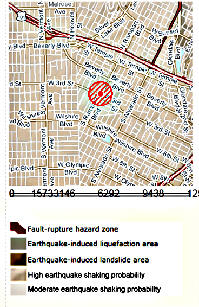 |
Rampart
village IS
OUTSIDE the following:
Earthquake-Induced Landslide Hazard zone*
Earthquakes can trigger landslides that may cause injuries and damage to
many types of structures.
Liquefaction Seismic Hazard zone*
Earthquakes can cause certain types of soils to lose strength and behave
like liquid. This can severely damage buildings and other structures.
Earthquake Fault zone*
Active earthquake faults may pose a risk of surface fault rupture hazard.
Surface rupture can damage buildings.
(more information at
http://www.conservation.ca.gov/cgs/geologic_hazards/regulatory_hazard_zones
)
back
to contents

Earthquake
Mitigation Checklist
What Should I do?
Based on the above
results, use the following mitigation checklist and information to reduce
injuries, protect your life and those of others, and reduce damage to your
home and property.
Recommended Actions for your Ground Shaking Intensity:
Earthquake
Preparedness
More information and ideas
on how to secure the contents of your home can be found at:
http://www.earthquakecountry.info/daretoprepare/.
Recommended actions for
Earthquake Fault zones
If the property is not
developed, a fault study may be required before the parcel can be
subdivided or structures permitted. If a property is developed, you will
not need a geologic study unless you plan to extensively add onto or
remodel an existing structure.
back
to contents

Disaster Preparation & Training
Key elements of the RVNC
Emergency Response Plan include:
|
|
|
|
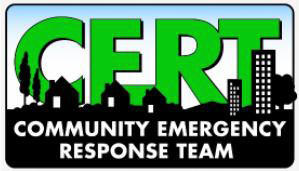
|
-
Los Angeles Fire Department (LAFD) Community
Emergency Response Team (CERT) program.
All residents 18+ years should take this important free
training program.
http://www.cert-la.com
-
There is also a TEEN CERT program which is generally
sponsored through schools.
|
back
to contents

What to do BEFORE an
Earthquake / Disaster
MAKE A PLAN – GET A KIT –
STAY INFORMED
Hold a Family Meeting
The purpose of a family
meeting is to inform and educate family members, including children,
seniors and family members with disabilities. Having a plan is one of the
most important steps you can take in disaster preparedness. Knowing what
to do and how to do it can help you and your family manage disasters with
less worry, fear, and uncertainty.
All Family Members need to
know the following:
-
The location
of your Survival Supplies
-
The location
of the “GO BAGS”
-
Create emergency cards for each of your
family members
-
Draw a map of
the house. Locate doors and windows that can be used as evacuation routes.
-
Identify two evacuation routes from each room. Practice your evacuation
routes.
-
Determine a
meeting place outside of your residence, in case it is unsafe to remain
indoors. Do not meet on the roof.
-
Determine one
location outside neighborhood in case of evacuation.
-
Keep gas tank
half full at all times. Gas might not be available after a disaster.
-
Determine out
of state contacts. Family members should be instructed to call them in
event of emergency. Local calls may be difficult to place.
-
Practice your Drop, Cover & Hold-On (Earthquake) and Stop,
Drop & Roll
(Fire Drills)
-
Install
smoke alarms and carbon monoxide CO detectors
-
Teach each
member of your family how to use a fire extinguisher.
-
Locate
utilities, and determine how to turn them off and with what tools? DO
NOT turn the gas back on by yourself.
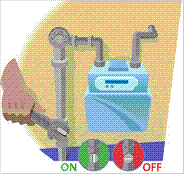
Gas Meter |
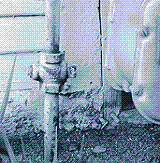
Gas On-Off Valve |
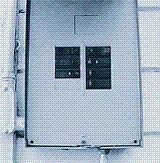
Electrical Meter |

Water Shut-Off |
Secure your space!
Look up - Look around - Look
down
back
to contents

Emergency Supplies
Kit Checklist
-
Water - 1 gallon/person/day for 7-14 days. People can
become dehydrated quickly, even in cold weather.
-
Food - 7-14 day supply of non-perishables: canned
meat, fruits and vegetables; cereal, peanut butter
-
Utensils - manual can opener, sharp knife utensils,
plates, cups, plastic forks & spoons, paper towels.
-
Battery operated or Hand-Crank Radio Use AM
Radio. Listen to KNX 1070 AM, KFWB 980 AM, and KFI 640 AM radio stations
for regional emergency alert information for the Los Angeles County
area. Two-way Radio is a big plus!
-
Flashlights - (in kit -Batteries should
be inserted at time of emergency.) Flashlight in rooms should have
batteries already inserted.
-
First Aid Kit - can be purchased at
a local pharmacy.
You can attend to the immediate first aid needs of your family,
including bleeding and burn relief. Look for instructions inside the
First Aid Kit.
-
Whistle - to signal for help.
-
Duct-Tape; Plastic Sheeting; Dust Mask - Duct tape is
versatile. Plastic sheeting and duct tape can be used as a
shelter-in-place barrier. Mask is for blocking contaminants.
-
Sanitation - soap, toothbrush, toothpaste, toilet
paper, moist wipes, large garbage bags and shovel for waste disposal
-
Tools - shut-off wrench, shovel, axe, hammer, pliers -
Know where the gas shut-off is located. Turn off only in an emergency.
-
Local
Maps -
You should be familiar with evacuation routes.
-
Clothes - two sets of clothes, undergarments, socks,
comfortable sturdy shoes. Babies may need more.
-
Blankets/ Sleeping Bags - enough to cover family
members for warmth and comfort.
-
Medication - at least one week supply. Instant cold packs for
refrigerated medications since you may not have access to refrigeration.
-
Matches - stored in a water-proof
container. Water-proof matches can
be purchased at camping supply stores.
-
Documents – Copies of
birth/death/marriage certificates; insurance and medical records, deeds,
bank statements, credit cards, drivers license, passport, credentials,
etc.
-
Household Inventory (including
pictures for insurance)
-
Family photos for identification
Be
Informed:
back
to contents

What to do
DURING an
Earthquake
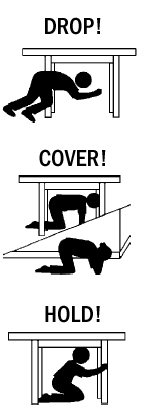 |
Stay as safe as possible
during an earthquake. Be aware that some earthquakes are actually
foreshocks and a larger earthquake might occur. Minimize your
movements to a few steps to a nearby safe place and if you are
indoors, stay there until the shaking has stopped and you are sure
exiting is safe.
If indoors...
-
DROP to the ground;
take COVER by getting under a sturdy table or other piece of furniture;
and HOLD ON until the shaking stops. If there isn’t a table or desk near
you, cover your face and head with your arms and crouch in an inside
corner of the building.
-
Stay away from glass,
windows, outside doors and walls, and anything that could fall, such as
lighting fixtures or furniture
|
-
Stay in bed if you are
there when the earthquake strikes. Hold on and protect your head with a
pillow, unless you are under a heavy light fixture that could fall. In
that case, move to the nearest safe place.
-
Use a doorway for
shelter only if it is in close proximity to you and if you know it is a
strongly supported, load-bearing doorway.
-
Stay inside until the
shaking stops and it is safe to go outside. Research has shown that most
injuries occur when people inside buildings attempt to move to a different
location inside the building or try to leave.
-
Be aware that the
electricity may go out or the sprinkler systems or fire alarms may turn
on.
-
DO NOT use the
elevators.
If outdoors...
-
Stay there.
-
Move away from
buildings, streetlights, and utility wires.
-
Once in the open, stay
there until the shaking stops. The greatest danger exists directly outside
buildings, at exits and alongside exterior walls. Many of the 120
fatalities from the 1933 Long Beach earthquake occurred when people ran
outside of buildings only to be killed by falling debris from collapsing
walls. Ground movement during an earthquake is seldom the direct cause of
death or injury. Most earthquake-related casualties result from collapsing
walls, flying glass, and falling objects.
If in a moving
vehicle...
-
Stop as quickly as
safety permits and stay in the vehicle. Avoid stopping near or under
buildings, trees, overpasses, and utility wires.
-
Proceed cautiously once
the earthquake has stopped. Avoid roads, bridges, or ramps that might have
been damaged by the earthquake.
If trapped under
debris...
-
Do not light a match.
-
Do not move about or
kick up dust.
-
Cover your mouth with a
handkerchief or clothing.
-
Tap on a pipe or wall
so rescuers can locate you. Use a whistle if one is available. Shout only
as a last resort. Shouting can cause you to inhale dangerous amounts of
dust.
For more information
see:
http://earthquakecountry.info/dropcoverholdon
back
to contents

What to do AFTER an Earthquake / Disaster
-
Earthquakes: Earthquakes
damage can extend for miles from the epicenter. Damages can
include collapsed building, bridges, and overpasses; cracked
roadways; downed power lines; broken gas lines; fires; explosions;
and landslides.
-
Earthquake responses: Drop,
Cover, and Hold On. Evaluate damages to structure and humans.
Evacuate structure if necessary. Take
your GO BAG.
-
Fires: Fires
can spread quickly. In five minutes an entire house can be
engulfed in flames. Often, the heat and smoke can be even more
dangerous than the flames.
-
Fire Response: If
you are on fire: STOP,
DROP, and ROLL.Evacuate immediately when you see, hear,
feel, smell smoke and/ or fire. Take
your GO BAG
-
Chemical or Biological Release: A
chemical emergency can occur as an accident or maliciously
resulting with a release of chemical agents. A biological
emergency can be a natural outbreak of disease or a deliberate
release of germs or other biological substances.
-
Chemical or Biological Release Response: Get
to a safe area by evacuating or shelter-in-place (use duct tape
and plastic sheeting to create barrier).
In
case of a disaster, ALL RESIDENTS should:
- Check in with your
out-of-state contact and register yourself at
SAFE and WELL
to let your family know that you are OK.
- Take care of
yourself, your family, home, and neighbors.
-
Assess your situation.
-
Check yourself for
injuries. Often people tend to others without checking their own
injuries. You will be better able to care for others if you are not
injured or if you have received first aid for your injuries
-
Place a HELP or
OK sign on your front door or window.
-
Protect yourself from further danger by
putting on long pants, a long-sleeved shirt, sturdy shoes, hard hat,
goggles, and work gloves. This will protect you from further injury by
broken objects.
-
After you have taken care of yourself,
help injured or trapped persons. If you have it in your area, call
9-1-1, then give first aid when appropriate and AS YOU ARE TRAINED.
Don't try to move seriously injured people unless they are in immediate
danger of further injury.
-
Use the telephone only to report
life-threatening emergencies. Telephone lines are frequently overwhelmed
in disaster situations. They need to be clear for emergency calls to get
through.
-
Use battery-powered lanterns or
flashlights to inspect your home. Kerosene lanterns, torches,
candles, and matches may tip over or ignite flammables inside.
-
Get everyone out if your home is
unsafe. Be sure to take your Grab ‘n Go bags with you.
Aftershocks following earthquakes can cause further
damage to unstable buildings. If your home has
experienced damage, get out before aftershocks happen.
-
Look for and extinguish small fires.
Eliminate fire hazards. Putting out small fires quickly, using available
resources, will prevent them from spreading. Fire is the most common
hazard following earthquakes.
-
If you don’t need to extinguish a fire,
place your fire extinguisher out front on the sidewalk. (This allows for
several resources in case a neighbor’s house catches fire to keep it
from spreading.)
-
Turn off gas at the main valve if you
smell gas, hear it hissing or see wavy lines in the air around it or
think it's leaking. DO NOT attempt to restore the gas yourself. This
requires a professional who knows what to check before turning the gas
back on. Explosions have caused injury and death when homeowners
have improperly turned their gas back on by themselves.
-
Clean up spilled
medicines, bleaches, gasoline, or other flammable liquids immediately.
Avoid the hazard of a chemical emergency.
-
Open closet and cabinet doors cautiously.
Contents may have shifted during the shaking of an earthquake and could
fall, creating further damage or injury.
-
Help neighbors who may require special
assistance. Elderly people and people with disabilities may require
additional assistance. People who care for them or who have large
families may need additional assistance in emergency situations.
-
Listen to a portable, battery-operated
radio (or television) for updated emergency information and
instructions. If the electricity is out, this may be your main source of
information. Local radio and local officials provide the most
appropriate advice for your particular situation.
-
Expect aftershocks. Each time you feel
one, drop, cover, and hold on! Aftershocks frequently occur
minutes, days, weeks, and even months following an earthquake.
-
Watch out for fallen power lines or broken
gas lines, and stay out of damaged areas. Hazards caused by earthquakes
are often difficult to see, and you could be easily injured.
-
Stay out of damaged buildings. If you are
away from home, return only when authorities say it is safe. Damaged
buildings may be destroyed by aftershocks following the main quake.
-
Watch animals closely. Leash dogs and
place them in a fenced yard. The behavior of pets may change
dramatically after an earthquake. Normally quiet and friendly cats and
dogs may become aggressive or defensive
All
CERT
trained should follow the LAFD CERT
Battalion 11 Action Plan.
(Contact the Battalion 11 Coordinator if you need a copy.)
back
to contents

Community
Meeting Areas
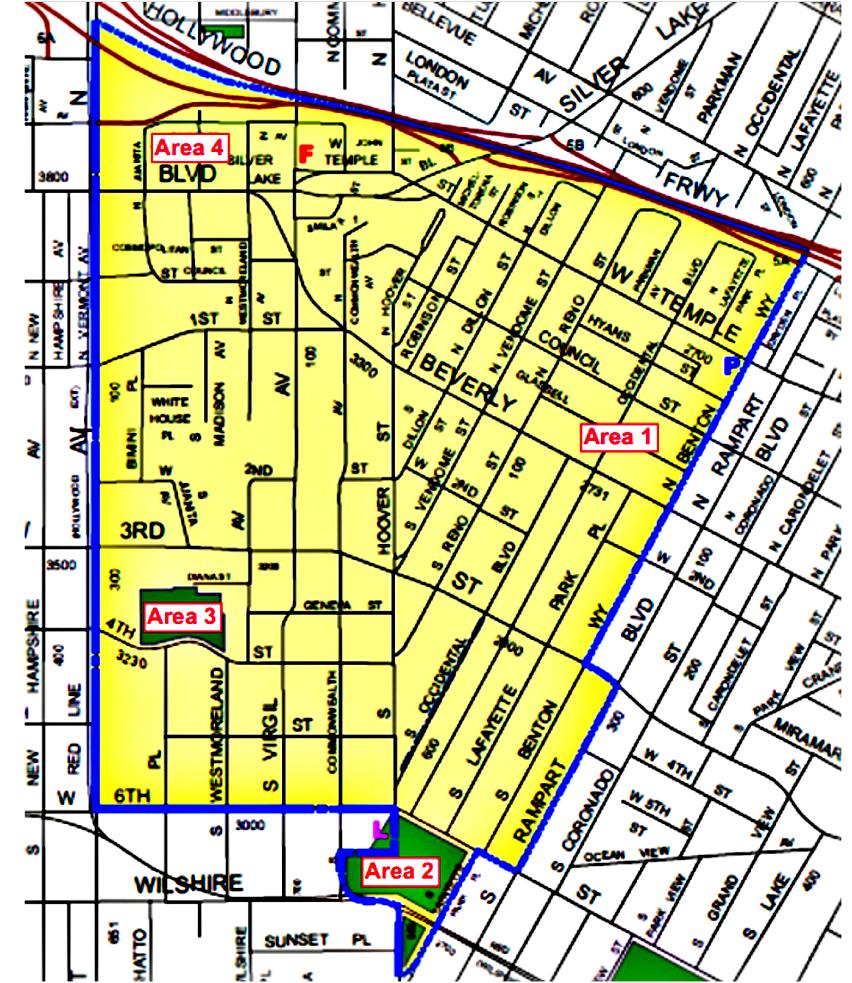
back
to contents

Emergency Information Sources:
Get Involved! |
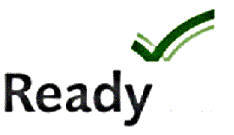

![]()
![]()